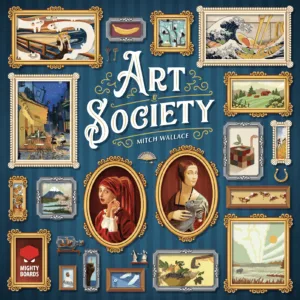 Hello fellow art collector. I see you’ve got your eye on this particular painting. Why yes, it would look fantastic next to the cityscape in your gallery. Well, you better be willing to pony up the big bucks, because a few other interested parties have got their eye on this one…
Hello fellow art collector. I see you’ve got your eye on this particular painting. Why yes, it would look fantastic next to the cityscape in your gallery. Well, you better be willing to pony up the big bucks, because a few other interested parties have got their eye on this one…
OK, pointless intro aside, Art Society is the newest offering from publisher Mighty Boards (Vengeance, Excavation Earth) that is designed by Mitch Wallace (no relation to Martin Wallace, I’m guessing). In this auction and tile-laying game, you’ll be trying to create the most prestigious gallery.
Gameplay Overview:
Each round, one player takes on the role of lead auctioneer and chooses a number of tiles (players +1) to put up for auction each round. I say auction, but you should know that you are not auctioning off each tile, but the draft order for choosing a tile.
Each player will place one of their bidding cards (numbers 1-20) face down and reveal them when everyone is ready. After they are revealed, each player drafts a painting tile in order from highest bidder to lowest.
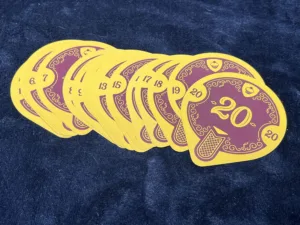
When placing your painting, there are a few rules to be aware of. It must orthogonally touch an existing painting and you gain a bonus if it’s next to a painting with a matching frame type. However, any paintings of the same type score nothing if they are next to each other. In short, Matching frames = good, and matching types = bad.
If you can’t or don’t want to place your painting, you can hand it off to your assistant, assuming he’s not currently holding a tile, to be placed on a later round. If your assistant is already filled, then you either can swap it with a painting in the museum of the same type, or you dump it into your excess pile, which will be negative victory points at the end of the game. It’s also worth noting that you gain bonus decor tiles for matching the frames.
The painting that is not chosen is given to the museum, which advances the painting’s color a number of prestige points. Then the gavel is passed and a new round begins.
At game end, you’ll earn victory points in a few different ways. But the main thing to know is that paintings will score multipliers based on their type’s prestige ranking. So those still life paintings that no one was choosing each round are now worth 5x, while the in demand cityscapes may only be worth 2x.
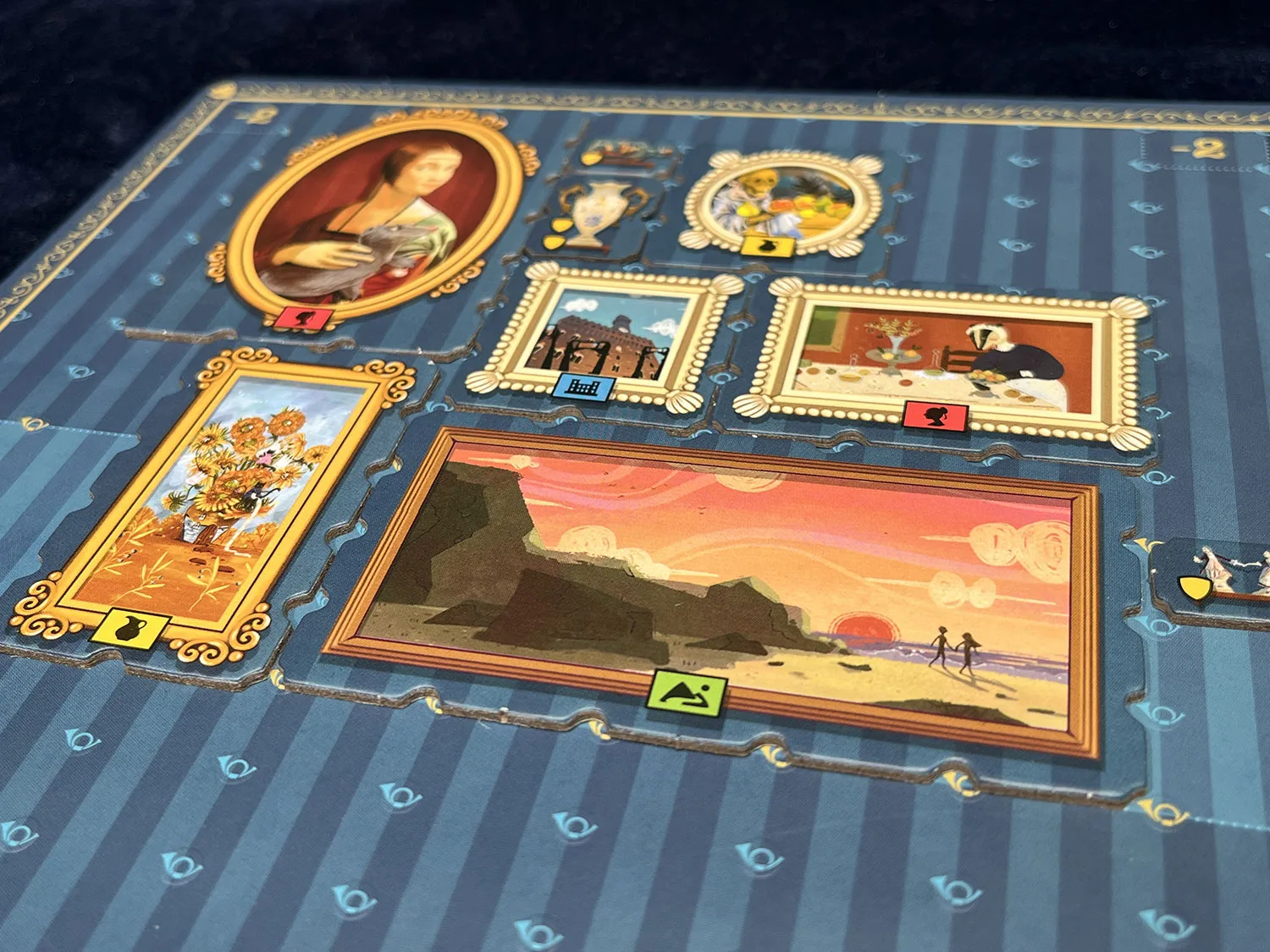
Game Experience:
I really enjoyed Art Society. While it didn’t do anything wholly new, it was a nice mash up of a simple auction and spatial puzzle. I appreciated that this wasn’t another polynomial game, and that each painting is square or rectangular. However, you can’t turn and rotate your paintings (who hangs their stuff upside down?), so you need to think carefully about where each painting is going.
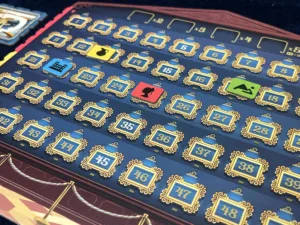
What makes the tile laying aspect so interesting is that you want matching frames next to each other, to earn those decor points. Yet on the other hand, you definitely don’t want matching types next to each other, as that zeros out both of the painting’s points. This is also where the assistant is a nice feature, as even if you get forced to take a painting you really don’t want, you can hand it off and possibly still use it in a future round.
This brings me to my biggest complaint for Art Society. Like most auction games, it’s not great at 2 players. It’s not bad, mind you, but it really needs 3-4 to shine. As you might expect, the auctions at 2 players are fairly lack luster. You’ll only ever have 1 player picking before you, so there is a good chance that you will get something you can use. The other issue with 2 players is that the game can get kind of mean. As spaces start to tighten up, you can look at what your opponent can or can’t use and choose paintings that won’t fit their board. In 3-4 players this becomes much more difficult, but hate drafting is much easier at 2 players.
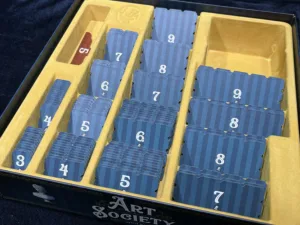
But that’s my only real criticism of the game. The game is really easy to teach and get to the table, and I appreciated the different ways to score points. The mechanics of the unchosen tile increasing the overall score isn’t a new one, but it works really well in this game. It adds another decision-making point: do I go for the painting that’s somewhat a better fit for my board or the one that’s currently way ahead on the prestige track. It also is a nice bonus for the player who is picking last in the round. They effectively get to choose which painting type will gain the prestigious bonus that round, which may end up having decent ramifications on the final scores.
Final Thoughts:
Art Society was a great first offering from new designer Mitch Wallace. The light auction mechanics and tile laying puzzle work really well together in an accessible game that also looks pretty darn good on your table. Although they didn’t really do much, I do appreciate Might Boards printing the game boards with little nubs to try and keep tiles from shifting. However. I think they probably needed a bit more height to be effective.
Overall though, I really enjoyed Art Society, which just missed being in my top 10 for 2023. If you are looking for a light weight game that you can play with just about anyone, give Art Society a look.
Final Score: 4 Stars – A fun auction and spatial puzzle game that offers plenty of interesting decision points.
 Hits:
Hits:
• Solid components
• Easy to learn rules
• Good mixup of auction and tile laying
• Good storage system for the tiles
Misses:
• Not great at two players
• Nubs don’t really do much





















